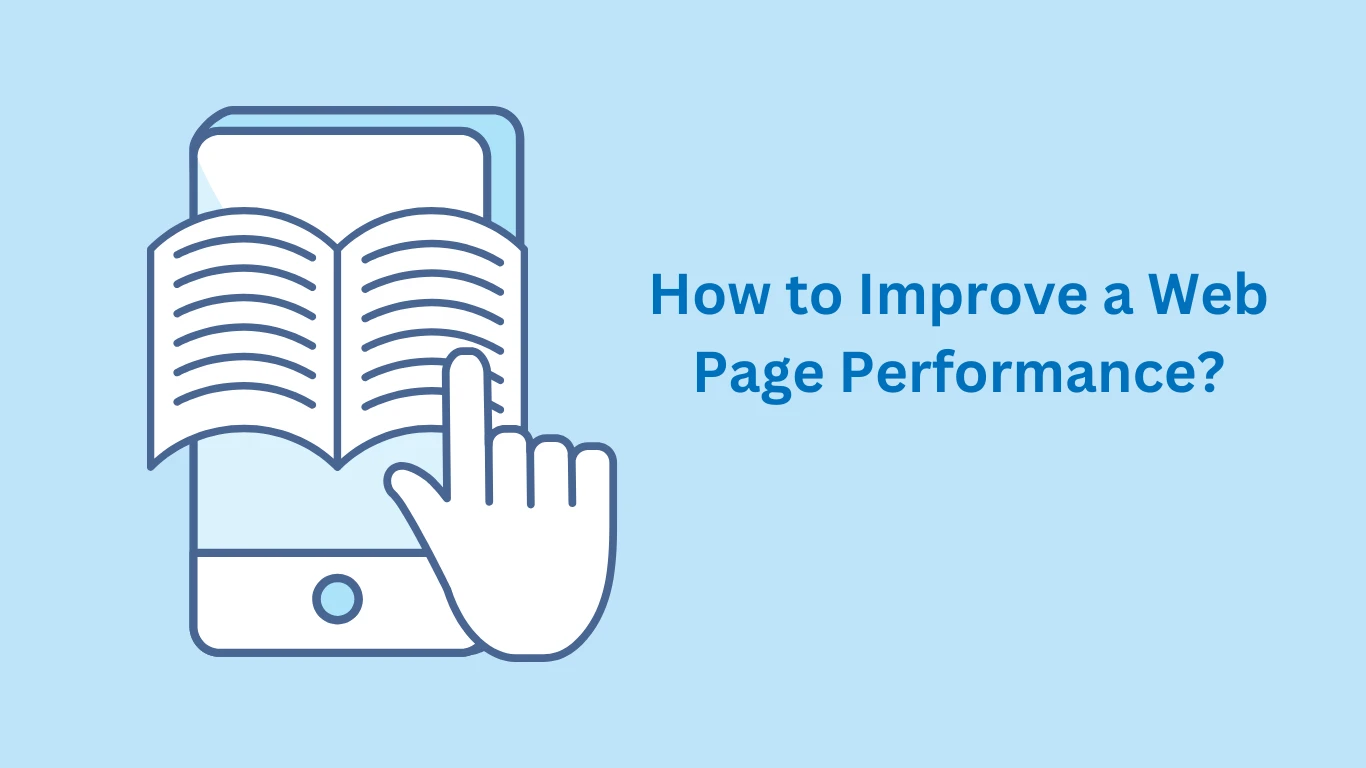How to Improve a Web Page Performance?

Do you want to know how to improve your web page performance and user experience? If yes, then you are in the right place! In this article, we will tell you some easy and effective ways by which you can make your web page fast, user friendly, and attractive. Let us know without any further delay. how to improve a web page What are those tips that you can adopt to improve the performance of your website?
Easy Tips to Improve a Web Page
1. Increase web page speed
Web Page Speed There is a very important factor. If your website loads slowly, users will quickly move to another page. And you don't want that to happen! So take the first step and improve your website speed.
Tips to improve speed:
- Compress Images: Reduce the size of large images so that the page loads faster.
- Use Browser Caching: This saves some data in the user's browser, due to which the page loads quickly.
- Minify CSS, JS, and HTML: Concise code to reduce load time.
- Use CDN: Content Delivery Network distributes the content of your website on different servers, so that the data reaches the user quickly.
2. Make it Mobile Friendly
Nowadays most people surf the Internet from their mobile phones. If your website is not mobile friendly, users may experience problems and leave the website. So how to improve user experience To keep this in mind, it is very important to make the website mobile friendly.
Mobile Optimization Tips:
- Responsive Design: The design of the website should be such that it looks correct on both mobile and desktop.
- Touch-Friendly Elements: Design the buttons and links on the website in such a way that they can be easily clicked on mobile screens.
3. Make Web Page Design Simple and Attractive
The design of the website should be such that the user does not face any problem in accessing any information. Simple and attractive design Not only attracts users but also increases the time spent on their website.
Tips to improve design:
- Minimalist Design: Do not use too many colors and graphics on the website. Have a clean design so that the user's attention is focused in the right place.
- Easy Navigation: Make the navigation on the website very simple and clear, so that the user knows where to go.
- Eye-catching Fonts: Choose attractive but readable fonts so users can easily read the text.
4. Optimize Content
Content is what attracts users to your website. If your content is not good in quality, users will quickly leave the website.Quality content Along with this, it is also very important to make the content SEO friendly.
Content Optimization Tips:
- High-Quality Content: Keep only that content on the website which is useful and attractive for the user.
- Right Keywords: Use the right keywords so that your website ranks better in Google.
- Multimedia Elements: Use images, videos and infographics to make the website look more interactive and user-friendly.
5. Increase User Interaction
If users are not able to perform some interactive activities on your website, they may get bored quickly. something to attract the user interactive elements It is important to add. This not only improves their experience but also increases the time spent on the website.
Interactive Elements:
- Buttons & Call to Action (CTA): Place buttons on your page that prompt users to take action, such as "Sign Up Now" or "Get Started."
- Forms: If you need information from users, create simple and short forms so that users feel comfortable filling them.
- Sliders: Use attractive sliders that introduce users to important sections of the website.
6. Improve SEO
SEO (Search Engine Optimization) not only increases the visibility of your page, but it also makes your content understandable for Google and other search engines. SEO Friendly Website Have a website that gets good ranking in search engines.
SEO Tips:
- Meta Tags & Descriptions: Have good and attractive meta tags and descriptions on every page.
- URL Structure: The URL of your website should be simple and SEO friendly.
- Content Optimization: Optimize the content for SEO, like using right keywords and choosing good headings.
7. Optimize Headings and Images for Fast Loading Time
The hallmark of a good website is its fast loading speed. If your website is slow loading, users can quickly become frustrated. fast loading time For this you have to optimize your images and headings.
Tips to improve speed:
- Image Compression: Compress large images to reduce load times.
- Lazy Loading: Use lazy loading, so that images load when users reach them.
- Optimize Heading Tags: Use headings properly on the website to make it easier for search engines to understand the content.
8. Regular Updates and Monitoring
Regular updates and monitoring are very important to increase the performance of any website. With this you will be able to understand in which direction your website is going and what needs improvement.
Tips:
- Test Your Website Regularly:Test website speed and performance regularly.
- Update Content & Design: Update the content and design from time to time so that users get something new to see.
Conclusion
Now you know that how to improve a web page And what are those simple tips by adopting which you can make your website even better? Be it website speed, user experience, content optimization, or SEO—improving all these aspects will increase your website's performance and improve the user experience.
By adopting the right methods, you can make your website very effective, which will not only strengthen your online presence but will also bring success to your business. So, are you ready to improve your website?
 Some Question
Some Question